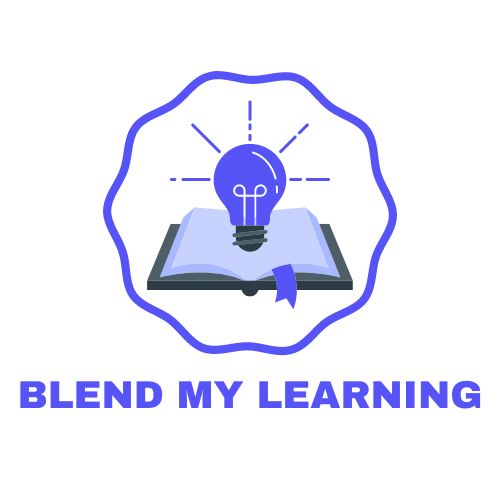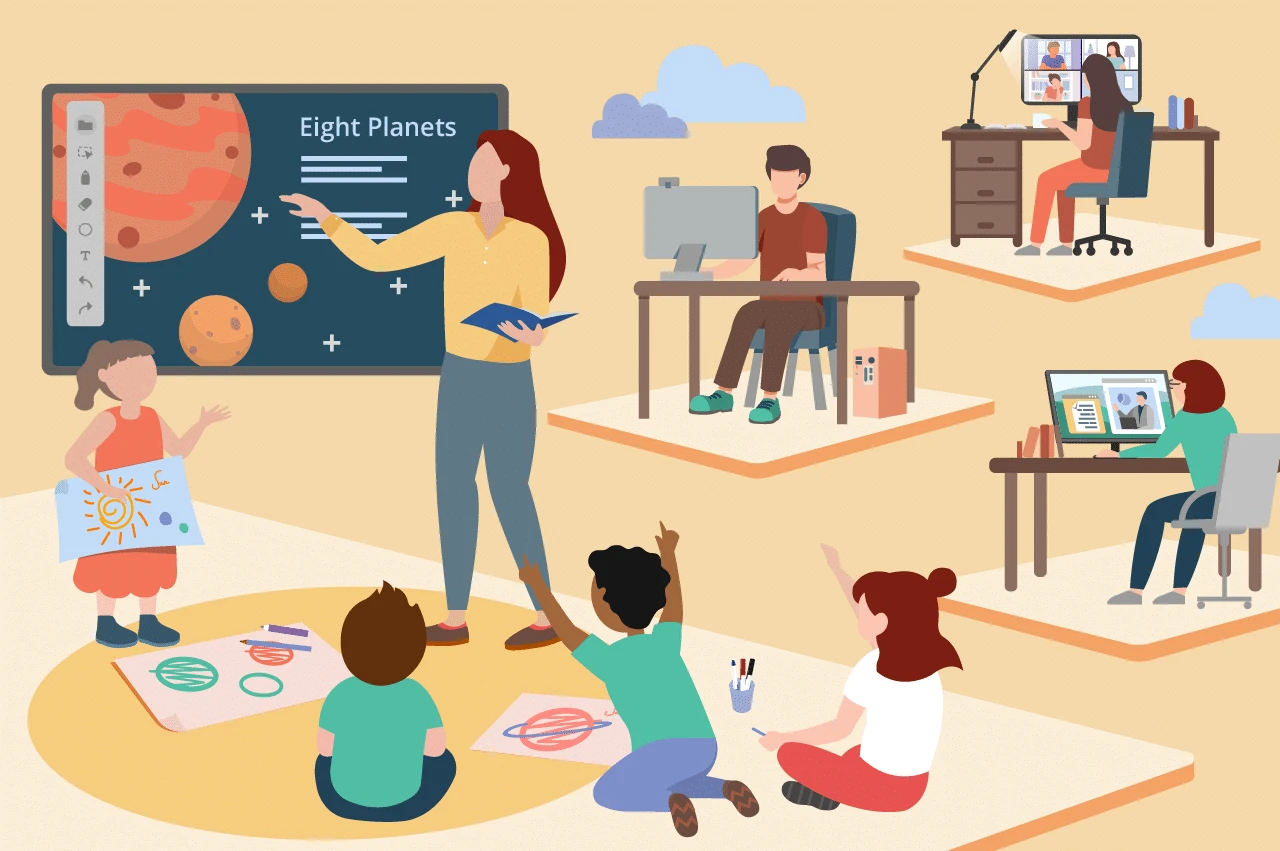Today, the need for flexible and engaging learning experiences has become increasingly crucial.
Blended learning has emerged as a powerful approach to meet the diverse needs of modern students.
That is why I want to provide you with a step-by-step guide designed to serve as a comprehensive resource for educators, instructional designers, and school administrators interested in developing a robust blended learning curriculum.
Let’s get going.
Step #1: Identifying Training Objectives
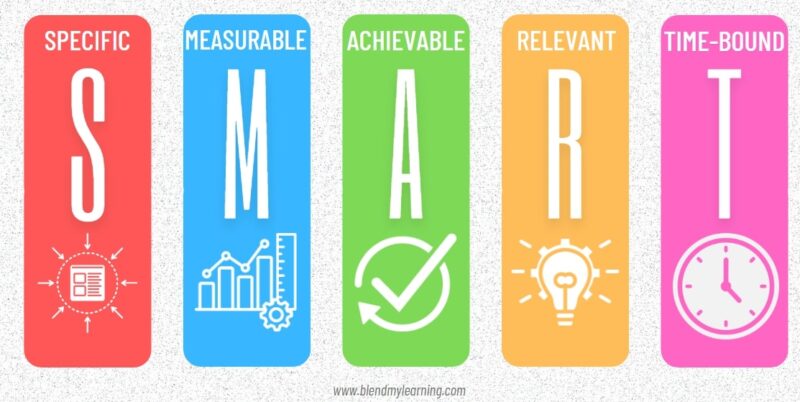
Setting clear training objectives is crucial for the success of any blended learning curriculum.
Using SMART goals ensures that the training program is focused and effective.
SMART stands for:
- Specific
- Measurable
- Achievable
- Relevant
- Time-bound
SMART goals help in defining what the training aims to achieve, how success will be measured, and within what timeframe.
For example, a specific goal might be to improve employees’ proficiency in a particular software by 20% within six months. Conducting a needs assessment is the next critical step.
The process involves gathering data to understand the training requirements of both the employees and the organization. Surveys, interviews, and performance reviews can help identify skill gaps and areas where training is needed.
A thorough needs assessment ensures that the training program is tailored to meet the actual needs of the workforce, thereby maximizing its relevance and impact.
Step #2: Choosing the Appropriate Model
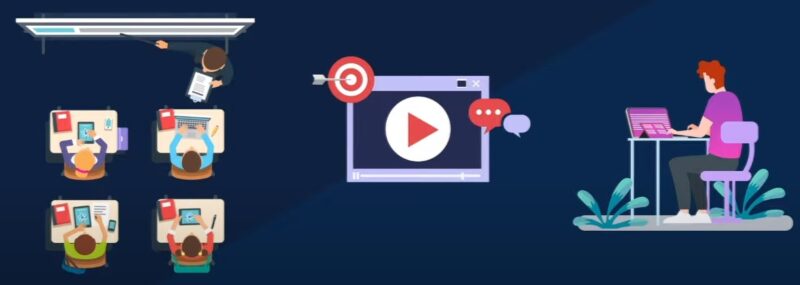
Selecting the right blended learning model is essential for aligning the curriculum with training goals, available resources, and learner engagement.
Several models can be considered:
| Model | Description |
|---|---|
| Rotation Model | Learners rotate between online, face-to-face, and group activities on a fixed schedule. |
| Flex Model | Online learning is primary, with face-to-face support as needed. |
| A La Carte Model | Learners take some courses entirely online and others in traditional classes. |
| Enriched Virtual Model | Most coursework is online with mandatory in-person sessions. |
| Flipped Classroom | Instructional content is online before class; in-person time is for interactive activities. |
The selection criteria for the appropriate model should consider the training objectives, the technological infrastructure, the nature of the content, and the level of engagement required from learners.
A well-chosen model ensures that the blended learning approach is effective and conducive to achieving the desired outcomes.
Step #3: Developing the Curriculum

Designing a blended learning curriculum involves integrating online and face-to-face learning activities in a coherent and complementary manner.
The curriculum should be structured to leverage the strengths of both instructional methods. Start by mapping out the key topics and learning outcomes for the program.
For each topic, decide which components are best suited for online delivery and which should be covered through face-to-face interactions.
Online activities might include:
- Video lectures
- Discussion forums
- Interactive quizzes,
While face-to-face sessions could focus on:
- Hands-on practice
- Group discussions
- Personalized feedback
Engaging learners is crucial for the success of the curriculum.
For instance, video lectures can provide visual and auditory learning, interactive quizzes can test knowledge in a fun and engaging way.
Team projects and collaborative assignments can foster peer learning and teamwork.
Step #4: Creating the Content
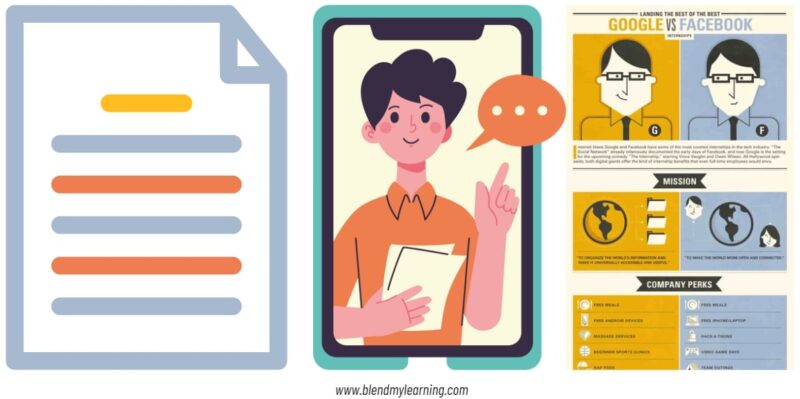
Content creation is a vital aspect of developing a blended learning curriculum. The content should be engaging, relevant, and designed to meet the diverse needs of learners.
Use a mix of formats to cater to different learning preferences. For example, text-based materials can provide detailed information, while videos can offer visual and auditory stimulation.
Add multimedia elements to enhance the learning experience. Videos can demonstrate complex processes or present real-world scenarios, infographics can simplify complex information, and interactive modules can provide hands-on practice.
Ensure that the content is organized in a logical sequence and aligned with the learning objectives.
It’s also important to consider the pacing of the content. Break down the material into manageable chunks to avoid overwhelming learners.
Use frequent assessments, such as quizzes and assignments, to reinforce learning and provide feedback.
Step #5: Selecting Technology
Choosing the right technological tools and platforms is essential for delivering a seamless blended learning experience. The primary tool will likely be a Learning Management System (LMS), which allows for the organization and delivery of online content, tracking of learner progress, and administration of assessments.
Other essential tools include video conferencing software for live sessions, discussion forums for peer interactions, and mobile apps for learning on the go.
The technology should be user-friendly, reliable, and accessible to all participants. Consider the technical capabilities of both the facilitators and learners when selecting tools.
Ensure that the technology integrates smoothly with existing systems and supports the various types of content and activities planned for the curriculum.
Provide technical support and resources to help learners and facilitators become comfortable with the technology.
Step #6: Preparing Facilitators

Facilitator training is crucial for the successful implementation of a blended learning curriculum.
Facilitators need to be proficient in using the chosen technology and effective in delivering content in both online and face-to-face formats.
Start by providing comprehensive training on the technological tools and platforms that will be used.
It includes how to navigate the LMS, conduct:
- Video conferences
- Manage discussion forums
- Create interactive content
Facilitators should also be trained in best practices for online teaching, such as how to engage learners, foster interaction, and provide feedback.
Facilitators should be prepared to offer ongoing support and guidance to learners. It includes being available to answer questions, provide clarification, and address any issues that arise.
Facilitators should also be skilled in identifying and addressing the diverse needs of learners, ensuring that everyone has an equal opportunity to succeed.
The Bottom Line
The key is taking it step-by-step and not rushing. Blended learning is all about balance – giving students the best of online and in-person instruction.
It’s an ongoing process of adjusting and improving too.
Keep checking in with your students and looking for ways to level things up.
Related Posts:
- Step-by-Step Guide to Setting Up a Learning…
- Blended Learning vs. E-Learning - What is a Better Option
- Top Blended Learning Models for Effective Education…
- Top 10 Online Learning Platforms for Blended Education
- Essential Tools for Digital Literacy in a Blended…
- Interactive Activities to Enhance Engagement in…
